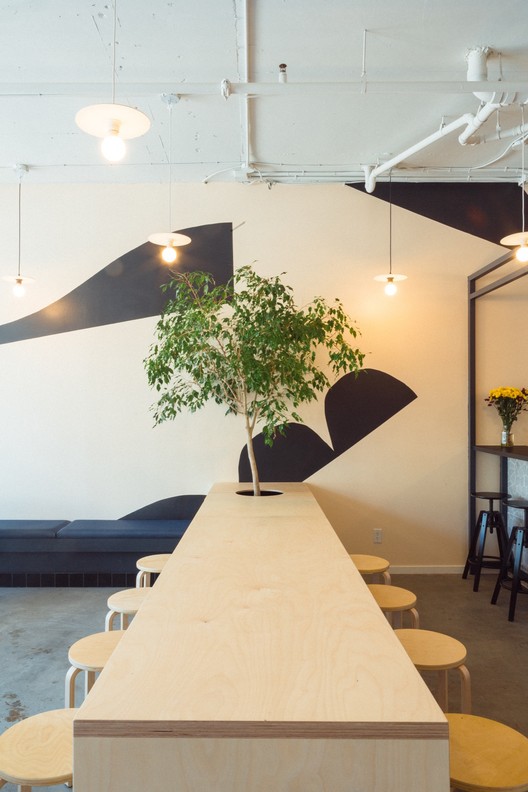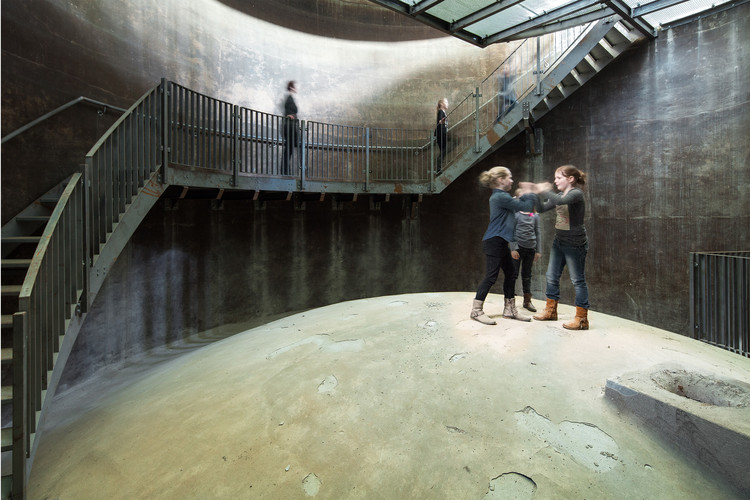Oyamadai House frontofficetokyo
2016-10-20 20:00
© Takumi Ota
(小田隆美)


架构师提供的文本描述。有了一个国旗形状的遗址,周围都是近邻,人们可以理解的本能就是离开城市,躲在墙后,这样才能更好地保证隐私。购买该网站的家庭却看到了一个尽可能开放的机会,利用这种小小的隔离度作为一个机会,从一个轻微的迁移中连接到这个大都市。尽管邻居们很亲近,但东京的趋势是拒绝这座城市,建造封闭的围墙,讽刺的是,允许他们采取相反的立场,在不失去隐私的情况下开放他们的家。这样,这个地点就像森林中的一片空地。
Text description provided by the architects. With a flag shaped site, bound on every side by close neighbors, the understandable instinct might be to step away from the city, retreat behind walls where privacy is better assured. The family that purchased the site saw instead a chance to be as open as possible, using the small degree of isolation as an opportunity to connect to the metropolis from a slight remove. Although the neighbors are close, the tendency in Tokyo is to reject the city and build closed walls, ironically allowing the family to take the opposite stance and open their home without loss of privacy. In this way the site is not unlike a clearing in the midst of a forest.
© Takumi Ota
(小田隆美)


甲板和通往屋顶的楼梯的落地都太大了,这样全家人就可以在白天向各个方向散开。在底层,一种类似的开放性定义了该计划。混凝土地板向外延伸,成为一种景观,被一种模糊边界的抽象形式所软化-不是在内外之间,而是在城市和家庭之间。就特大城市而言,东京特别适合这种做法。对个人表达的善意和接受,如果起点是接受而不是拒绝城市条件,它提供了进入太阳、空气和空间的机会。
The deck and landing for the stairs to the roof are oversized so the family can spread out in every direction during the day. On the ground floor a similar openness defines the plan. The concrete floor extends outwards and becomes a landscape, softened by an abstract form that blurs boundaries - not between inside and out, but between city and home. As megacities go, Tokyo is particularly suitable to this approach. Benign and accepting of individual expression, it affords access to sun, air, and space if the starting point is one of acceptance rather than rejection of the urban condition.
© Takumi Ota
(小田隆美)


我们用木材建造的预算很小,而且尽可能简单。在易受灾地区的木结构通常违背我们的理想,需要坚固的墙壁或支撑来抵抗地震。为了满足这一需要,大的X形墙被放置在房屋的两端。这种结构就像支撑物一样,设置在计划之外,而不妨碍开放的愿望。
A small budget required that we built with wood, and as simply as possible. A wooden structure in a disaster prone area normally works against our ambitions, requiring substantial sheer walls or braces to resist earthquakes. To answer this need large X-shaped walls are placed at either end of the home. Acting like buttresses, the structure is set outside the plan without interfering with the desire for openness.
© Takumi Ota
(小田隆美)


Floor Plans + Site
平面图用地


© Takumi Ota
(小田隆美)


第一层和第二层分别作为单人房间处理,在开放计划中,容纳浴缸和卫生间的盒子作为粗隔板工作。二楼的高度是为了让他们一家人可以从起居室看到河谷,俯瞰山丘地带邻居的屋顶。利用一楼3米高的天花板,天花板上悬挂着一个大型长期储藏室,为日常生活腾出了地板空间。储藏室定义主卧室,并附带用于悬挂一组大的门,可以关闭浴室和卧室的需要。
The first floor and second floor are each treated as single rooms, with boxes holding bath and toilet working as rough dividers in the open plan. The height of the second floor was set so the family could see out to the river valley from their living room, looking over the roofs of their neighbors in the hilly site. Taking advantage of the 3 meter high ceilings on the first floor, a large long-term storage is hung from the ceiling, freeing up floor space for daily life. The storage defines the master bedroom and is incidentally used to hang a group of large doors that can close off the bath and the bedroom as needed.
© Takumi Ota
(小田隆美)


产品描述。压缩混凝土面板被用作主要的外部装饰和内部覆盖木支撑结构,以及WC在两层楼。完成连接内外,应用螺丝和雨幕的外部,并粘在内部胶合板垫。
Product Description. Compressed concrete panels were used as the principal exterior finish and on the interior to cover the wood brace structure as well as the WC on both floors. The finish connects inside and out, applied with screws and a rain screen on the exterior, and glued on the interior over a plywood underlay.
© Takumi Ota
(小田隆美)






























Architects frontofficetokyo
Location Japan
Category Houses
Architect in Charge Will Galloway, Koen Klinkers, Misuzu Yoshikawa, Joris Berkhout
Area 120.0 m2
Project Year 2016
Photographs Takumi Ota
Manufacturers Loading...































